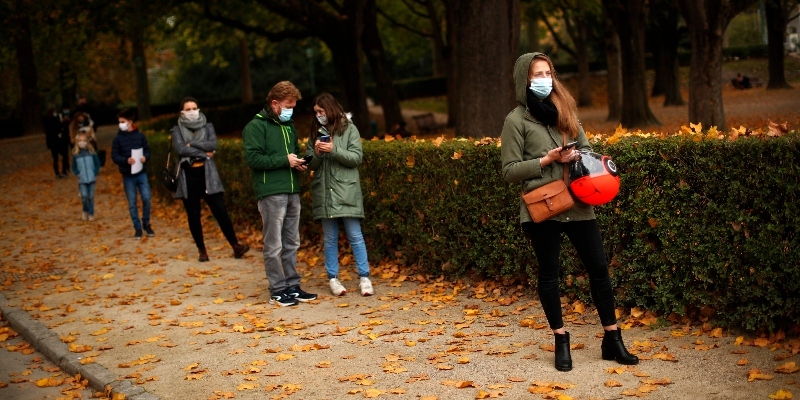In Belgium, the second wave of the coronavirus epidemic is getting worse and worse. Health Minister Frank Vandenbroucke he said that the country risks being overwhelmed by a “tsunami” of infections and has defined the situation in the country as “the worst in all of Europe”. Vandenbroucke said that the government manages to control the evolution of infections “with great difficulty” and that if the number of hospitalizations for COVID-19 continues to increase, Belgian hospitals will have to postpone treatment for patients with other diseases.
Currently the patients with COVID-19 hospitalized in Belgian hospitals are 2,774, including 446 in intensive care. The number of infections in recent weeks has continued to increase and consequently hospitalizations have increased. Between 10 and 16 October there was an average of around 8,400 new cases per day, a 69 percent increase over the previous week. Between 13 and 19 October, about 266 new hospitalizations were registered on average per day, compared to an average of about 200 in the previous week.
Over 4.2 million tests have been carried out in Belgium since the beginning of the epidemic, on a population of about 11 million and 400 thousand inhabitants. More than 55,000 swabs were carried out in the last week and, worryingly, 15.3 percent of tests were positive, up from 13.5 percent last week. Confirmed infections in the last two weeks per 100 thousand inhabitants were 816. In Italy the percentage of positives went from 2.1 percent on October 2 to 9.4 percent in 19, while the infections recorded in the last two weeks are few over 100 per 100 thousand inhabitants
Belgium, just a month ago, was cited by UK Secretary of State for Health and Social Affairs, Matt Hancock, as a role model to face the second wave of infections, after the decline that had occurred in August. Hancock had praised the Belgian model of the so-called “social bubbles”, small groups of friends and family, separated from each other, already experienced during the first wave. Hancock had used the example of the Belgian model to convince British public opinion of the need to introduce the so-called “rule of 6”, ie a ban on meeting more than six people from different family groups.
Infections in Belgium, however, started to rise again in September in conjunction with the reopening of schools after the summer holidays and the resumption of all production activities. On 14 October, the highest number of new cases per day was recorded of contagion since the beginning of the epidemic: 10,932. To try to stop the increase in infections on Monday, the government imposed new restrictions, such as reducing the number of people admitted to the social bubble to a single “close contact” outside a family. Four guests, who can be replaced every two weeks, can visit the house, but respecting the physical distance.
Moreover, from Monday, and for four weeks, all bars and restaurants in Belgium are closed. The sale of alcohol is prohibited after 8pm and a curfew has been imposed between midnight and 5am. The new Belgian Prime Minister, Alexander De Croo, said last Friday that the situation in the country was “more serious” than it was at March before the lockdown. Meanwhile, the government is undergoing strong criticism regarding its infection traceability system and above all for the large number of people who are unable to carry out the tests and for the long time with which the results arrive. The government announced on Monday that screening capabilities would be temporarily made available to symptomatic patients as a priority, as labs had said late last week they could no longer cope with the flow of tests.
According to the experts, Belgium will not reach the maximum number of coronavirus infections before the end of October. Then, according to epidemiologist Pierre Van Damme, towards the first days of November the increase in cases should stabilize as a result of the new restrictive measures that should start working.
–


/data/photo/2014/04/03/2114036ilustrasi-penembakan-2780x390.jpg)